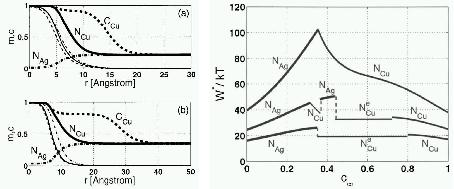
Gyula Tóth1, László Gránásy2,3
1Department of Mathematical Sciences, Loughborough University, Loughborough, Leicestershire, LE11 3TU, U.K.
2Institute for Solid State Physics and Optics, Wigner Research Centre for Physics, P.O. Box 49, Budapest H-1525, Hungary
3BCAST, Brunel University, Uxbridge, Middlesex, UB8 3PH, United Kingdom
In the second part of our paper, we address crystal nucleation in the metastable liquid miscibility region of eutectic systems that is always present, though experimentally often inaccessible. While this situation resembles the one seen in single component crystal nucleation in the presence of a metastable vapor-liquid critical point addressed in previous works, it is more complex because of the fact that here two crystal phases of significantly different compositions may nucleate. Accordingly, at a fixed temperature below the critical point, six different types of nuclei may form: two liquid-liquid nuclei: two solid-liquid nuclei; and two types of composite nuclei, in which the crystalline core has a liquid "skirt", whose composition falls in between the compositions of the solid and the initial liquid phases, in addition to nuclei with concentric alternating composition shells of prohibitively high free energy. We discuss crystalline phase selection via exploring/identifying the possible pathways for crystal nucleation.


